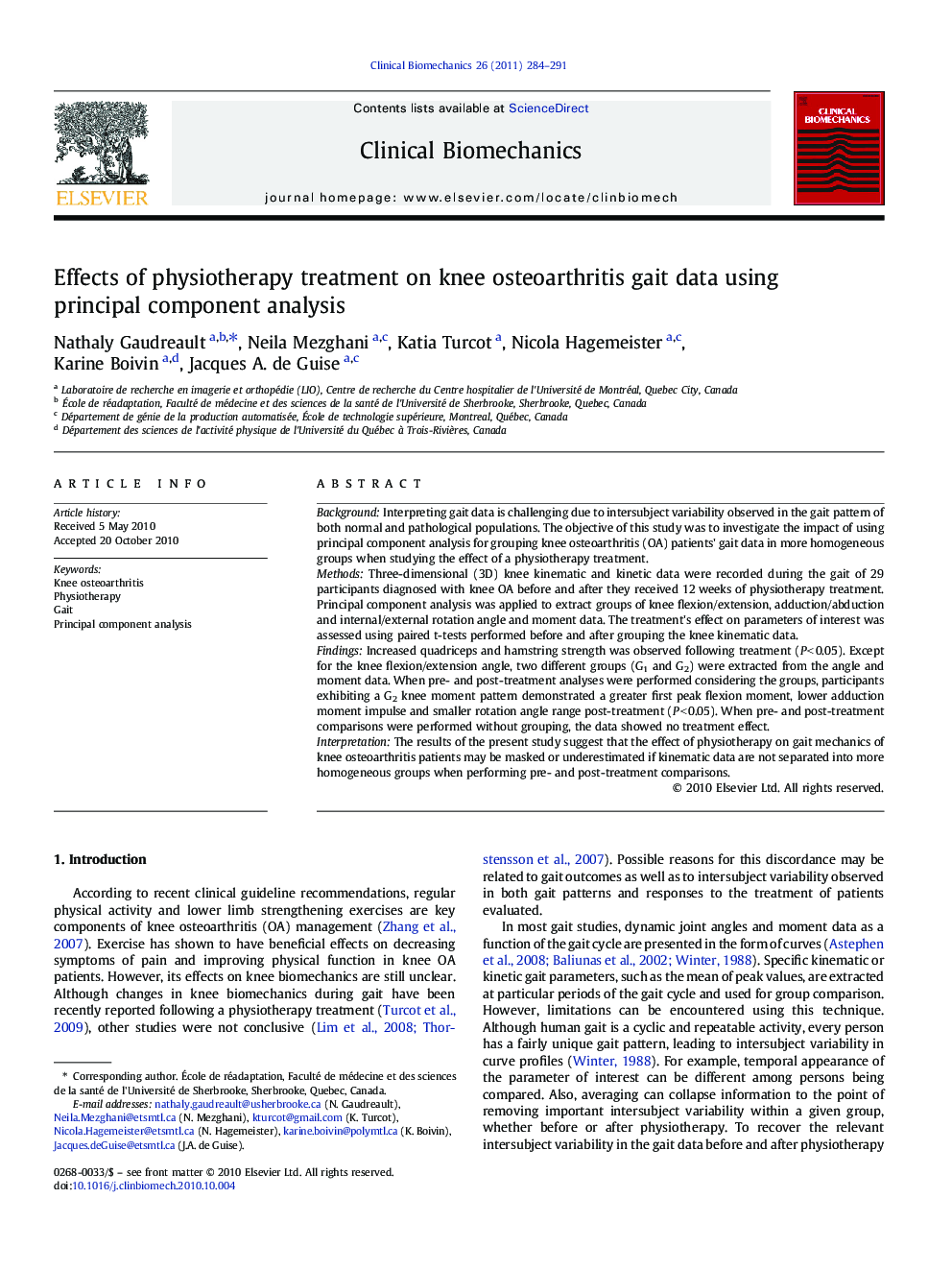| Article ID | Journal | Published Year | Pages | File Type |
|---|---|---|---|---|
| 4050925 | Clinical Biomechanics | 2011 | 8 Pages |
BackgroundInterpreting gait data is challenging due to intersubject variability observed in the gait pattern of both normal and pathological populations. The objective of this study was to investigate the impact of using principal component analysis for grouping knee osteoarthritis (OA) patients' gait data in more homogeneous groups when studying the effect of a physiotherapy treatment.MethodsThree-dimensional (3D) knee kinematic and kinetic data were recorded during the gait of 29 participants diagnosed with knee OA before and after they received 12 weeks of physiotherapy treatment. Principal component analysis was applied to extract groups of knee flexion/extension, adduction/abduction and internal/external rotation angle and moment data. The treatment's effect on parameters of interest was assessed using paired t-tests performed before and after grouping the knee kinematic data.FindingsIncreased quadriceps and hamstring strength was observed following treatment (P < 0.05). Except for the knee flexion/extension angle, two different groups (G1 and G2) were extracted from the angle and moment data. When pre- and post-treatment analyses were performed considering the groups, participants exhibiting a G2 knee moment pattern demonstrated a greater first peak flexion moment, lower adduction moment impulse and smaller rotation angle range post-treatment (P < 0.05). When pre- and post-treatment comparisons were performed without grouping, the data showed no treatment effect.InterpretationThe results of the present study suggest that the effect of physiotherapy on gait mechanics of knee osteoarthritis patients may be masked or underestimated if kinematic data are not separated into more homogeneous groups when performing pre- and post-treatment comparisons.
